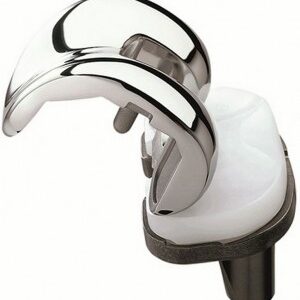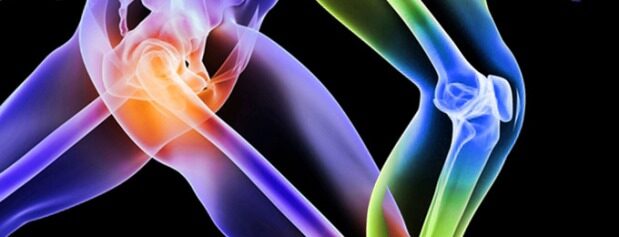
Knee Prosthesis
What is knee prosthesis? It is the process of replacing the knee joint which is…

What is hip prosthesis ?
It is the process of replacing the hip joint which is distorted due to various reasons, with artificial joint made of metal or metal-ceramic mixture under operation.
In young people:
– Congenital diseases of the hip joint
– Hip joint infection in childhood
– Perthes Disease,
– Damage of the bone circulation following hip bone fracture
– Osteonecrosis disease
– In the aftermath of rheumatism diseases
– Untreated hip dislocation; these may lead to damage of joint cartilage.
In the advanced ages:
– It develops in particular due to old age after 65
– In cases where hip joint is damaged following hip dislocations that developed as a result of osteoporosis in advanced ages
– In the aftermath of bone tumor metastasis that lead to pathologic fracture
– Hip prosthesis may be required due to rheumatic diseases
When should the hip prosthesis be applied?
There are 2 important justifications for hip prosthesis operation due to calcification ,
1.The walking distance of the patient falling below 300 meters, or
2.The patient being required to use pain killing drugs every day, in case of the occurrence of these, it is time to apply prosthesis to the patient. Kidney and liver damage due to drugs could occur in patients who are required to take pain killers every day.
It is beneficial use apply prosthesis for increasing the walking distance of the patient and avoiding the need for pain killers.
Prosthesis surgery due to hip fracture should obligatorily be performed as a matter of emergency. Letting the patient stand alone is the most important way to save the life of the patient. This could only be provided through hip prosthesis.
For Whom Hip Prosthesis is not Applicable?
-Prosthesis is not applied to patients who have active infection focus in the body until the infection is cured
-Hip prosthesis should not be applied for those who have neurological diseases that lead to falling by creating continuous balance problem.
Does Hip Prosthesis Have Any Alternative?
Joint fusion surgery could be performed in addition to prosthesis in patients who have difficulty in walking and have strong pain due to failure of hip joint. Joint fusion surgery is preferred in persons who perform heavy physical work. However, if both hip joints are distorted, it is undesirable to perform fusion operation for both hips. Joint fusion operation has gradually been decreased since it leads to restriction of movement at an advanced level. People prefer movable hip joint instead of frozen hip joint.
What are the Types of Prosthesis ?
Prosthesis are named according to the replacement of the hip bone and its socket. When both the hip bone and its socket are replaced, this is called “Total hip Prosthesis”. (Picture 3-4). If only the hip bone is replaced and the socket is kept without replacement, this is called “Partial Hip Prosthesis” (Figure 4-5). For patients with an expected life of over 5 years, it is more appropriate to apply Total Hip Prosthesis.


Besides, the prosthesis are named as cemented and cement-free hip prosthesis depending on whether bone cement is used during prosthesis application. Cement-free prosthesis are preferred in cases where it is necessary to replace the prosthesis in the future in young patients.
Total hip prosthesis are produced from various materials. In particular, high-technology ceramic headed prosthesis which are resistance against wearing are preferred in young patients in order to extend use life.

In addition to arthrosis (damage of articular surface), there are Special Tumor Prosthesis when it is required to remove the bone following bone tumor surgeries.
Surface replacement prosthesis, which is applied by partial bone removal in young patients, are also used today. In these prosthesis, since the bone of the patient is removed at limited amount, the second surgery is easier. The objective in these prosthesis is to provide the patient with time.
What is the Process of Surgery?
 Before all prosthesis surgeries, the patients should be examined from top to bottom and it should be searched whether there is any infection focus on the body. For that reason, blood and urine tests are performed on all of our patients before the surgery, and the patient is prepared to surgery after it is seen that the results are clean. At this stage, in patients who take anticoagulant medication, the drug is stopped 5 to 10 days prior to the operation depending on the nature of the drug, replacing with short impact anticoagulant injections (heparin with low molecule weight). When the risk of bleeding stops a couple of days before the operation, the patient could restore to the former routine treatment. It could be necessary to transfuse blood to the patient in case of surgeries with bleeding.
Before all prosthesis surgeries, the patients should be examined from top to bottom and it should be searched whether there is any infection focus on the body. For that reason, blood and urine tests are performed on all of our patients before the surgery, and the patient is prepared to surgery after it is seen that the results are clean. At this stage, in patients who take anticoagulant medication, the drug is stopped 5 to 10 days prior to the operation depending on the nature of the drug, replacing with short impact anticoagulant injections (heparin with low molecule weight). When the risk of bleeding stops a couple of days before the operation, the patient could restore to the former routine treatment. It could be necessary to transfuse blood to the patient in case of surgeries with bleeding.
The patient is mobiles and walked within 12 hours following the operation. Whereas a total pressure is applied immediately to the cemented prosthesis, partial pressing is used depending on the bone structure in cement-free prosthesis (walking stick is used).
The patient is walked every 2-3 hours during the period of hospitalization. This is the most effective way to prevent Deep Vein Thrombosis that could occur. Besides, heparin injection with low molecule weight is applied subcutaneously to the patient. Tablet is applied instead of anticoagulant injection during discharge. The patient is requested to take anticoagulant pills for 30 days.
What are the possible complications during and after the operation?
During hip prosthesis surgery, such problems as bleeding – fracture in bones, early hardening of the cement and nerve injury could occur. Early and late complications could develop after the operation.
Early complications: The most frequent infections include risks of deep vein thrombosis and removal of the prosthesis from the socket.
Late complications: Loosening of prosthesis These complications could be minimized by taking relevant measures, however, it is not possible to totally avoid them.
The average life of total hip prosthesis ranges between 15 to 20 years. However, there are prosthesis with a life up to 25 years. The life of prosthesis could change depending on the surgery technique, type of the prosthesis applied, activity level and bone quality of the patient, as well as his body weight.
What should be done to protect against infections following prosthesis surgery?
The patient who has prosthesis in his body has the risk of getting infected throughout the life. Patients with prosthesis should take protective antibiotic before any surgical intervention, including tooth extraction or filling.